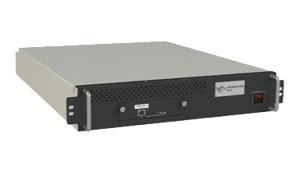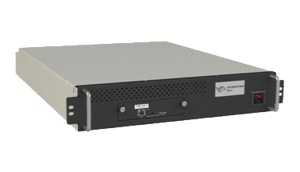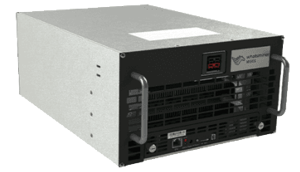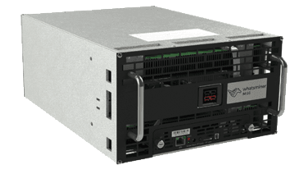
Bitcoin Mining Calculator
Calculate BTC mining profitability in real time
Select a Miner
Click any miner to auto-fill hashrate, power, and estimated profit

Whatsminer M63S Hydro 390T
MicroBT
Hashrate
390.00TH/s
Power
7215W
Est. Profit / Day
$NaN
Price
$13,699

Whatsminer M63 Hydro 366T
MicroBT
Hashrate
366.00TH/s
Power
7283W
Est. Profit / Day
$NaN
Price
$11,799

Whatsminer M63S Hydro 360T
MicroBT
Hashrate
360.00TH/s
Power
7215W
Est. Profit / Day
$NaN
Price
$12,499

Antminer S21 Hydro
Bitmain
Hashrate
335.00TH/s
Power
5360W
Est. Profit / Day
$NaN
Price
$7,599

Whatsminer M63 Hydro 334T
MicroBT
Hashrate
334.00TH/s
Power
7283W
Est. Profit / Day
$NaN
Price
$10,799

Whatsminer M66S Hydro 298T
MicroBT
Hashrate
298.00TH/s
Power
5513W
Est. Profit / Day
$NaN
Price
$10,799

Whatsminer M66 Hydro 280T
MicroBT
Hashrate
280.00TH/s
Power
5572W
Est. Profit / Day
$NaN
Price
$9,499

Whatsminer M66S Hydro 270T
MicroBT
Hashrate
270.00TH/s
Power
5513W
Est. Profit / Day
$NaN
Price
$9,699

Whatsminer M53S Hydro
MicroBT
Hashrate
260.00TH/s
Power
6760W
Est. Profit / Day
$NaN
Price
$5,999

Whatsminer M33S++ Hydro
MicroBT
Hashrate
242.00TH/s
Power
7260W
Est. Profit / Day
$NaN
Price
$5,599
Configure & Calculate
Select a miner first or enter values manually
390.00TH/s H/s
Mining Summary
Frequently Asked Questions
- Enter your hashrate (TH/s), power consumption (W), electricity cost ($/kWh), and pool fee (%).
- Or click any miner from the 'Popular Miners' table to auto-fill specs.
- Click 'Calculate Profit' to see real-time earnings, ROI, and break-even time.
- All inputs are preloaded with top ASIC miner specs and live network data.
- Results update instantly with current Bitcoin price, difficulty, and block reward.
- Miners compete to solve complex math puzzles (hashes) to validate transactions.
- The first to solve the puzzle adds a new block and earns the block reward.
- Current reward: 3.125 BTC per block (post-2024 halving).
- Requires massive computing power — measured in EH/s (exahashes per second).
- Network hashrate is currently over 600 EH/s globally.
- You need an ASIC (Application-Specific Integrated Circuit) miner.
- CPUs, GPUs, and FPGAs are no longer profitable for Bitcoin mining.
- Top models: Bitmain Antminer S21, MicroBT Whatsminer M60S, etc.
- Most require 220V+ power and 20+ AMP circuits.
- Check wattage: e.g., 3,500W per S21 unit.
- 1. Buy ASIC miner(s) from reputable vendors.
- 2. Ensure 220V+ power with sufficient amperage (e.g., 200A service = ~33kW usable).
- 3. Connect to stable internet and cooling system.
- 4. Join a mining pool (e.g., F2Pool, AntPool, ViaBTC).
- 5. Configure miner with pool URL, worker name, and password.
- 6. Monitor via pool dashboard or miner interface.
- Solo mining is statistically impossible due to 600+ EH/s network hashrate.
- Pools combine hashrate from thousands of miners to find blocks faster.
- Rewards are split proportionally (PPS, FPPS, PPLNS payout models).
- Fees: 1–4% (e.g., F2Pool: 2.5%, SlushPool: 2%).
- Popular pools: F2Pool, AntPool, ViaBTC, BTC.com, Poolin, SlushPool.
- Yes — with efficient hardware (95+ TH/s), cheap power (<$0.05/kWh), and scale.
- Profit depends on: hashrate, electricity cost, BTC price, and difficulty.
- Example: 390 TH/s at $0.05/kWh → ~$8–$12/day profit (at $110k BTC).
- Profitability changes daily — use this calculator to check real-time ROI.
- Industrial miners in Texas, Iceland, or with renewable energy dominate.
- Depends on your hashrate and network difficulty.
- Example: 390 TH/s → ~0.000157 BTC/day (~$17 revenue at $110k).
- After ~$8.50 in electricity → ~$8.50 net profit.
- Use the calculator above to get your exact daily output.
- At 390 TH/s: ~6,362 days (~17.4 years) to mine 1 BTC.
- At 1 PH/s: ~2,500 days (~6.8 years).
- At 10 PH/s (data center): ~250 days.
- Does NOT account for difficulty increases or halvings.
- Most miners sell BTC daily, not HODL for 1 full coin.
- Calculate: Hashrate × Efficiency (J/TH) = Watts.
- Example: 390 TH/s × 18.5 J/TH = ~7,215W.
- 200 AMP × 220V service = 44kW → ~33kW safe → ~11 × S17+ miners.
- Never exceed 75% of circuit capacity to avoid tripping breakers.
- Use PDUs, cooling, and monitoring for 24/7 uptime.